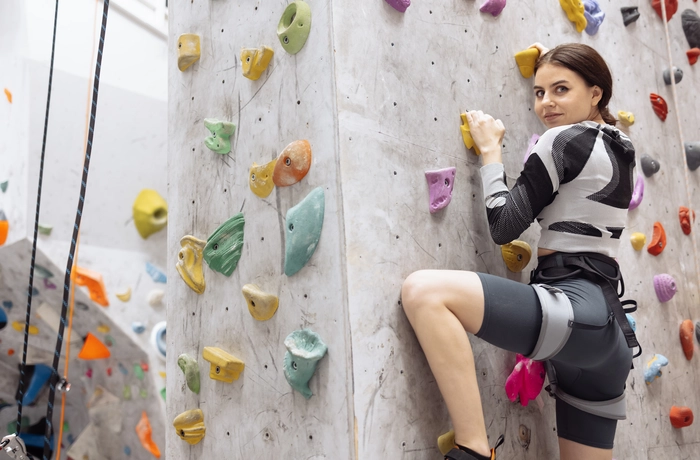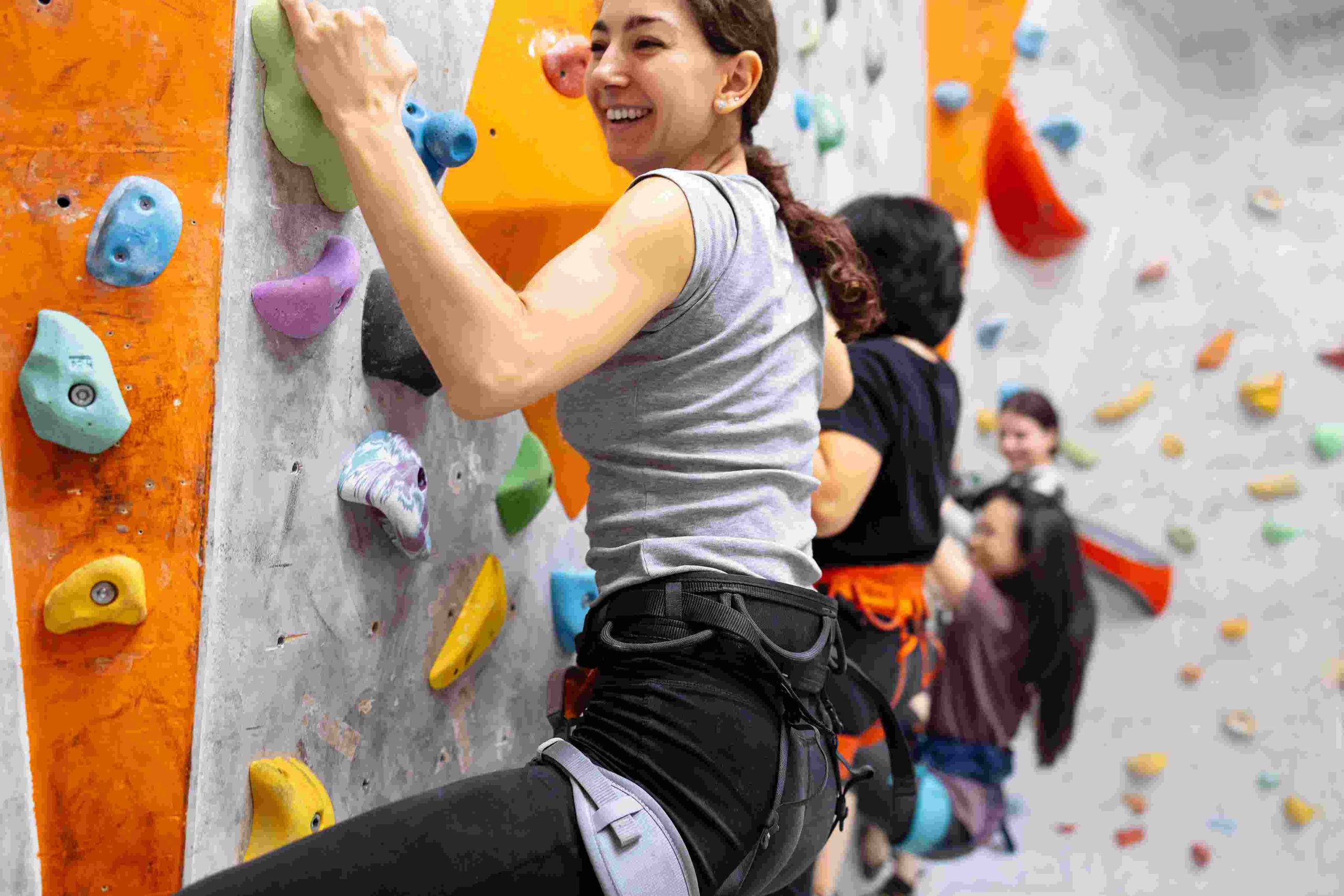Imagine standing at the base of a rugged crag, the sun warming your back, ready to tackle your first outdoor climb. With the right gear, that moment feels exhilarating, not intimidating. For beginners transitioning from gym walls to natural rock, choosing the proper equipment is the key to safety, confidence, and fun. This guide breaks down the essential rock climbing gear for beginners, offering a clear beginner rock climbing equipment list to kickstart your outdoor climbing journey. From budget-friendly picks to sustainable options, we’ll cover what you need, how to choose it, and expert tips to ensure your gear works as hard as you do. Whether you’re wondering, “What gear do I need for outdoor climbing?” or searching for the best climbing shoes for beginners, this outdoor climbing gear guide has you covered.
Why the Right Climbing Gear Is Crucial for Beginners
Gear isn’t just equipment—it’s your lifeline on the rock. For new climbers, the right tools enhance safety, boost performance, and let you focus on mastering techniques without worrying about faulty equipment. According to the American Alpine Club (2023), 75% of climbing injuries are preventable with proper gear, especially helmets and harnesses. Take Sarah, a 28-year-old gym climber who ventured outdoors for the first time. During her climb, a small rockfall grazed her helmet, leaving her unscathed but shaken. Without that helmet, her story could have been different. Climbing gear safety matters because it protects you from the unpredictable nature of outdoor crags. Beginner-friendly gear, designed for comfort and ease of use, also helps you build confidence, making those first ascents unforgettable.
Your Beginner Rock Climbing Equipment List: Must-Have Gear
To start outdoor climbing, you need a core set of gear that balances safety, functionality, and affordability. Below is a detailed beginner rock climbing equipment list, outlining each item’s purpose, key features, and top recommendations for 2025.
1. Climbing Shoes
Climbing shoes give you the grip and precision needed to navigate rock surfaces. For beginners, neutral shoes with a snug but comfortable fit are ideal, allowing you to focus on footwork without the pain of aggressive, downturned models. Look for durable Vibram rubber soles for reliable traction.
- Recommendations: La Sportiva Tarantulace ($90), Scarpa Origin ($99).
- Expert Tip: Andy Wellman from Outdoor Gear Lab emphasizes neutral shoes for beginners, noting they help develop technique without discomfort.
2. Climbing Harness
A harness secures you to the rope, making it a non-negotiable for safety. Beginners should choose harnesses with adjustable leg loops for a custom fit and gear loops for carrying equipment. Women-specific models, like the Petzl Luna, cater to diverse body types for added comfort.
- Recommendations: Black Diamond Momentum ($60), Petzl Corax ($65).
- Expert Insight: Professional guide Jane Jackson stresses adjustable harnesses for versatility, especially for climbers with fluctuating body sizes or layering needs.
3. Climbing Helmet
Helmets protect against falling rocks and impacts, a must for outdoor climbing where loose debris is common. Lightweight, ventilated designs with MIPS technology (for concussion protection) are top choices. The UIAA (2023) reports that helmets reduce head injury risk by 70%, making them essential.
- Recommendations: Black Diamond Half Dome ($60), Petzl Boreo ($65).
- Data: Sarah’s rockfall incident highlights why helmets are non-negotiable.
4. Belay Device and Locking Carabiner
A belay device controls the rope to keep you or your partner safe during a climb. Assisted-braking devices, like the Petzl Grigri, offer extra security for beginners, while simpler tube-style devices are budget-friendly. Pair with a locking carabiner for secure connections.
- Recommendations: Petzl Grigri ($120), Black Diamond ATC ($20).
- Source: REI Expert Advice recommends starting with assisted-braking devices for ease of use.
5. Chalk Bag and Chalk
Chalk improves grip by reducing sweat on your hands, essential for maintaining control on sweaty summer climbs. Sustainable chalk options, like plant-based formulas, minimize environmental impact. A durable chalk bag keeps your supply accessible.
- Recommendations: Black Diamond Mojo ($15), Rhino Skin Solutions chalk.
- Source: Nature Climbing highlights eco-friendly chalk as a growing trend.
6. Climbing Rope (Optional)
Ropes are vital for top-rope or lead climbing, but beginners can often use gym or guide-provided ropes to start. If purchasing, choose a dynamic rope (9.5–9.9mm diameter, 60–70m length) with dry treatment for weather resistance.
- Recommendations: Mammut 9.5 Crag Dry ($200), Sterling Evolution ($180).
- Note: Ropes are a bigger investment, so prioritize other gear first.
Affordable and Eco-Friendly Climbing Gear for Beginners
Building your kit doesn’t have to break the bank—or the planet. Beginners spend an average of $300–$500 on initial gear (Statista, 2024), but smart choices can keep costs down while supporting sustainability.
Budget Tips
- Shop Second-Hand: Platforms like REI Used Gear or GearTrade offer 30–50% savings. Sarah saved $50 on a used Black Diamond harness, proving pre-loved gear can be just as reliable.
- Prioritize Versatility: Choose all-purpose gear, like the Petzl Corax harness, suitable for top-rope and future sport climbing.
- Look for Sales: Retailers like Backcountry often have seasonal discounts.
Sustainable Choices
- Recycled Ropes: Brands like Patagonia and Mammut offer ropes made from recycled materials, reducing environmental impact.
- Plant-Based Chalk: Rhino Skin Solutions provides eco-friendly chalk that’s kinder to crags.
- Eco-Conscious Brands: Black Diamond’s recycled chalk bags and Patagonia’s sustainable practices lead the way.
By balancing budget rock climbing gear with sustainable climbing gear, you can climb with confidence and a clear conscience.
How to Choose Climbing Gear: Tips for Beginners
Selecting the right gear means prioritizing fit, safety, and your climbing goals. Here’s how to make informed choices:
- Fit and Comfort: Try shoes and harnesses in-store to ensure a snug, pain-free fit. Shoes should feel like a firm handshake, not a vice grip.
- Climbing Style: Neutral gear suits top-rope climbing, with versatility for future sport or trad routes.
- Safety Certifications: Check for UIAA or CE standards on helmets, ropes, and harnesses to ensure quality.
- Inclusivity: Opt for women-specific harnesses (e.g., Petzl Luna) or shoes designed for wider feet to accommodate diverse body types.
Jane Jackson, a professional mountain guide, advises choosing adjustable harnesses to handle layering or weight changes, ensuring comfort across seasons. These tips make how to choose climbing gear straightforward and tailored to your needs.
Maintaining Your Climbing Gear for Safety and Longevity
Proper care extends your gear’s life and keeps you safe. Follow these climbing gear maintenance and rock climbing safety tips:
Maintenance
- Clean Ropes: Use lukewarm water and a rope brush to remove dirt, then air-dry away from sunlight.
- Store Properly: Keep gear in a cool, dry place to avoid UV damage or mildew.
- Inspect Regularly: Check for frayed ropes, worn harness stitching, or dented helmets, retiring damaged items immediately.
Safety Tips
- Double-Check: Always verify harness buckles and knots, like the Figure-8 Follow Through, before climbing.
- Learn Belaying: Practice with a certified instructor to master safe belaying techniques.
- Wear a Helmet: Make it a habit outdoors, as Sarah’s story shows.
NOLS instructors emphasize that consistent maintenance prevents accidents and saves money in the long run.
Where to Buy Affordable Climbing Gear for Beginners
Finding the right gear is easier with trusted sources. Here’s where to buy climbing gear:
- Retailers: REI, Backcountry, and Moosejaw offer reliable new gear with expert advice.
- Second-Hand: REI Used Gear, GearTrade, or local climbing gyms provide affordable options.
- Sustainable Options: Patagonia and Nature Climbing specialize in eco-friendly climbing gear.
Rock Spot Climbing notes that beginners can build a full kit for $300–$500 by mixing new and used items, making outdoor climbing accessible.
Conclusion
Your outdoor climbing adventure starts with the right gear. This beginner rock climbing gear guide covers the essentials—climbing shoes, harness, helmet, belay device, chalk bag, and optional rope—equipping you for safe, confident ascents. By choosing budget rock climbing gear and sustainable climbing gear, you can climb responsibly without overspending. Ready to start outdoor climbing? Join a local climbing gym, enroll in an REI outdoor course, or connect with climbers in your area to turn your crag dreams into reality. Share your first climb story in the comments or tag us on social media—we can’t wait to hear about your journey!


